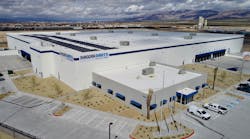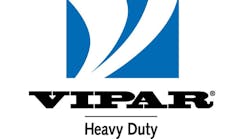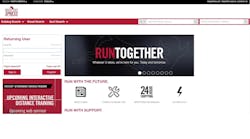Broad gains across most of the company’s product and geographical markets led Cummins Inc. to record revenues and strong earnings in the second quarter.
The company today reported second-quarter revenues of $3.34 billion, up 18 percent from $2.84 billion in the second quarter of 2006 and 10 percent higher than the previous quarterly record set in the fourth quarter of last year.
Net income of $214 million, or $2.13 per diluted share, was down 3 percent from $220 million ($2.19 per diluted share) in the second quarter of 2006, which included a $28 million ($0.28 per share) one-time tax benefit. Absent the tax benefit a year ago, net income increased 11 percent over the same period in 2006.
Earnings Before Interest and Taxes (EBIT) increased 9 percent to $354 million, from $325 million during the same period in 2006, and also was a quarterly record.
The company’s strong performance comes in the face of the emissions-related slowdown in the North American heavy-duty truck market, which is expected to be down 45 percent this year. Cummins’ North American heavy-duty engine shipments fell 42 percent from a year ago, but significant growth in the Company’s non-heavy duty truck engine markets and other product lines more than offset that decrease.
“This was a tremendous quarter for Cummins and is further proof that the work we have done to diversify our business is paying off,” said Cummins Chairman and Chief Executive Officer Tim Solso. “Our strong performance in the first half of the year has put us in a position to make 2007 Cummins’ most profitable year ever — which would be a significant feat given the challenges we have faced in the heavy-duty truck engine market.”
Based on its first-half performance and its outlook for the remainder of the year, Cummins also raised its 2007 earnings guidance today to $7.15 - $7.65 from $6.00 - $6.50 a share.
The company’s Engine, Power Generation and Components businesses all reported record revenues in the second quarter, while Power Generation, Components and Distribution reported record Segment EBIT.
In the Engine business, sales to light-duty automotive and recreational vehicle markets, as well as the global medium-duty truck, bus and construction markets, were the key drivers of broad gains — lessening the impact of lower heavy-duty truck engine sales. Segment EBIT fell 2 percent from 2006.
The company’s share of the North American heavy-duty market continued to increase in the second quarter. Through May, Cummins had earned a 33.1 percent share of the market — up from 27.1 percent at the end of 2006.
The company’s Power Generation business continues to produce record sales and earnings, led by significant growth in the Company’s commercial generator set and alternator product lines. Growth was strongest in North America, the Middle East and India.
The Components business — which includes filtration, exhaust aftertreatment, turbochargers and fuel systems — reported significantly improved profitability, along with record quarterly sales. Tougher emissions controls around the world are driving strong gains in this business. Cummins Filtration reported a 29 percent increase in operating profit on an 11 percent rise in revenue, while Cummins Emission Solutions is on pace to triple its sales from last year.
The company’s Distribution business reported record profit and near-record sales during the quarter. Demand for power generation equipment increased significantly in North America, Europe and the Middle East. Distributor joint venture income increased substantially from the same period in 2006 led by strong performance at the Company’s North America distributor joint ventures.
The company expects to spend $320 - $350 million on capital projects this year — part of $2 billion in planned capital expenditures around the world in the next five years. The company also anticipates that its unconsolidated joint ventures will spend another $1 billion on capital projects during that same period.








